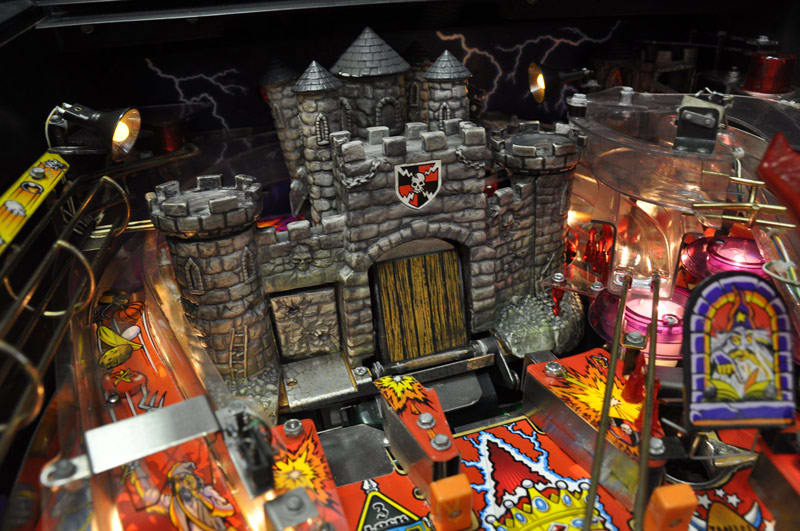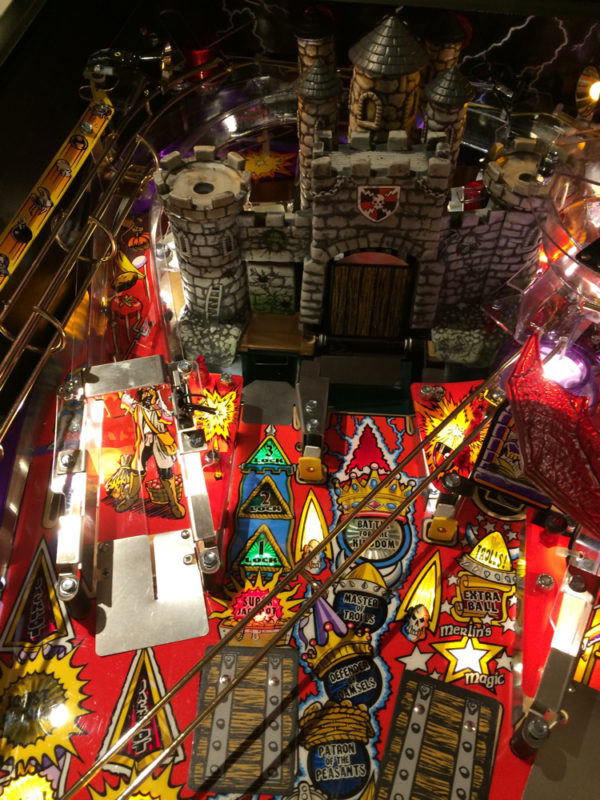

Medieval Madness is widely held to be one of the best pinball machines of all time. Recreated to the exacting standards of the original game this remake contains a number of enhanced features not available on the original game, including: modern electronics, fully adjustable color display, all LED lighting, and class D digital audio amplifier.
#Stern pinball medieval madness license#
Two pop-up trolls in playfield become active during “Trolls!” mode.Behold the Renaissance of Pinball, it's Ye Olde Medieval Madness!Ĭhicago Gaming is pleased to offer the rebirth, under license from Williams Electronics Games, Inc., of the original smash hit pinball machine, Medieval Madness. A left-side catapult propels ball airborne into a habitrail. As a result, a new game starts up as the score carries over to the new game.įlippers (2), Pop bumpers (3), Ramps (2), Autoplunger. If the player succeeds in scoring the final jackpot, all remaining balls are drained and the display shows the King of Payne’s demise and Merlin announces you are the new King of Payne. Unless the player has any “Troll Bombs”, two trolls will be in the way of the gate making hitting the gate very challenging. And here the player must hit the castle gate seven times, and get inside to score the final jackpot. Once all the Battle Jackpots have been scored, the second phase of the mode starts. In the first phase, the player has to score all the Battle Jackpots by hitting the madness targets. This two-phased Wizard Mode starts once the player pockets the ball in the castle, with five balls on the playing field. Barnyard Madness: Shoot all catapult items at the castle.Collecting at least one can start the Multiball by shooting into “Merlin’s Magic”: Multiball Madness: Each of the sub-missions (except for “Castle Crusher”) can light an insert in front of “Merlin’s Magic”.Castle Multiball: Light the Lock at the broad side (hole to the left of the castle gate) and lock three balls (same hole).Collect the Trolls in “Merlin’s Magic” and finish them off by three shots at the head each to light Troll Madness.Īll these goals have to be repeated several times to get the corresponding insert in front of the castle to light up. Master of Trolls: Light the Trolls by hitting the targets in front of the castle.The final shot up the tower lights Damsel Madness. Defender of Damsels: Shoot up the right ramp to advance the Damsel.Catapult Ace: Shoot the catapult to shoot various items at the castle (Catapult Madness).Patron of Peasants: Shooting the left ramp advances the Peasants and finally lights Peasant Madness.

Joust Champion: Shooting the loop(s) advances Joust and finally lights Joust Madness.In order to get to the Wizard Mode “Battle for the Kingdom” one has to achieve the following goals:

The game’s ramps introduced a patented feature that would prevent a failed ramp shot from draining straight down the middle between the flippers. Other objectives can be scored by shooting the left and right ramps, the left and right orbits, and the catapult ramp in the lower left corner of the playfield. Medieval Madness also features two Trolls, animated targets that are normally concealed below the playfield, but can pop up during certain gameplay modes. Additional hits will cause the portcullis to rise, and shooting the ball into the castle entrance generates an explosion effect on the dot matrix display, a lightshow, and a sizable award of points. As a result, the drawbridge will lower with a specific number of hits, exposing the portcullis. One of the game’s primary objectives is to “destroy” six castles by hitting the castle’s entryway with the pinball. The centerpiece of the playfield is an animated castle with a solenoid-controlled portcullis and motorized drawbridge. Much of the game’s dialogue was written by Scott Adsit and Kevin Dorff, at the time, members of the Second City Mainstage in Chicago. Demand for the machine soon outstripped supply significantly, and today it is one of the most collectible and expensive machines. It was an immediate critical and popular success, earning well on location and achieving widespread popularity among collectors. Designed by Brian Eddy and programmed by Lyman Sheats, Medieval Madness Pinball Machine by Williams had a production run of 4,016 units. Medieval Madness Pinball Machine by Williams was released in June 1997.


 0 kommentar(er)
0 kommentar(er)
